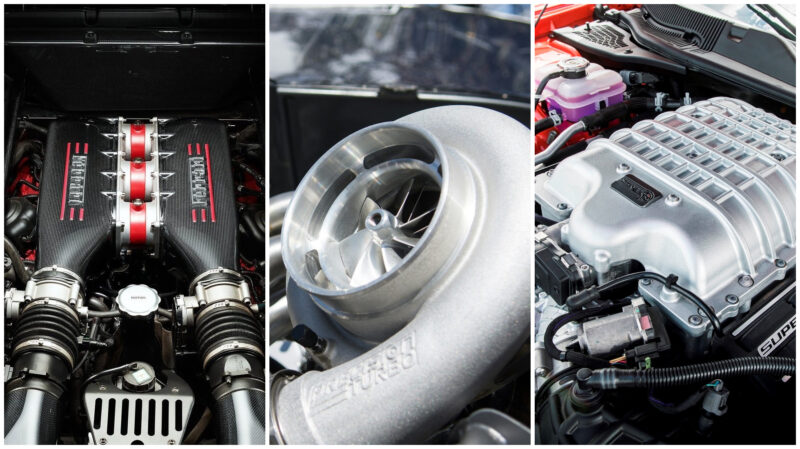When it comes to internal combustion engines, there are three common terms that you will come across: NA, turbocharger, and supercharger. Basically, all three refer to how an engine brings air into the combustion chamber to generate power.
Naturally aspirated (NA) engines take in naturally through atmospheric pressure. This type of engine does not come with a force induction system.
Meanwhile, both turbochargers and superchargers are forced induction systems that essentially compress air to create more powerful combustion.
NA engines are the most widely used as they are cheaper to run and easier to maintain, while turbocharged engines are typically found in performance vehicles. However, with the changing automotive landscape, the adoption of turbocharging has become more widespread among manufacturers.
After Mercedes-Benz continued their Kompressor engines, the use of superchargers has declined but there are some models that still employ this system, such as the Dodge Challenger/Charger and all SVR models from Jaguar Land Rover.
How does a turbocharger work?
According to renowned turbocharger manufacturer Garrett, a turbocharger uses an engine’s exhaust gas to drive the turbine wheel at speeds of up to 350,000 RPM. The turbine wheel then drives the compressor wheel through a shaft.
As both wheels spin, a large amount of air is drawn in and compressed before being cooled via an intercooler to further increase its density before it enters the engine.
The compressed-air makes the fuel burn more efficiently for greater power and fuel economy.
Pros and cons of a of turbocharger
With a turbocharger, the engine enjoys a significant increase in power. In fact, a turbocharged engine can produce as much power as an NA engine with a larger capacity.
Additionally, turbocharged engines are said to be more fuel-efficient because they can generate higher power with less fuel.
However, the high performance nature of a turbocharged engine can lead to overheating and higher levels of stress on internal components, thus requiring more frequent maintenance to ensure it remains in optimal condition.
How does a supercharger work?
If a turbocharger is driven by exhaust gas, a supercharger is mechanically powered by a belt connected directly to the engine’s crankshaft.
The supercharger increases intake by compressing air above atmospheric pressure without creating a vacuum, which in turn forces more air into the engine. With the additional air, more fuel can be injected, thus producing higher power.
Pros and cons of a supercharger
Like turbochargers, superchargers allow the engine to produce higher power and torque. However, it doesn’t face the issue of turbo lag because a supercharger is powered by the engine’s crankshaft. Additionally, a supercharger provides better low-RPM response.
That said, superchargers are not as efficient as turbochargers as they require engine power to generate more power. Additionally, internal components are exposed to higher pressure and heat, affecting the engine’s lifespan.
Which is best?
If performance is not a priority, an NA engine is sufficient because the power and torque it produces is adequate for daily use and it is cheaper to operate.
For those seeking high performance, turbocharged and supercharged engines are the perfect fit. However, turbocharged engines seem to make more sense due to their higher efficiency and market availability.
Alternatively, some manufacturers offer twin-charged engines, such as Volkswagen, Audi, and Volvo, for those unable to choose between the two systems.
